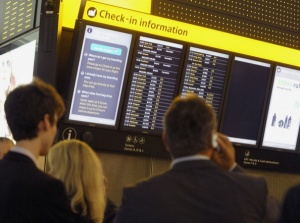New visa system for EU travellers

Officials at the European Union have launched the new Visa Information System (VIS) allowing visa applications to be processed faster thanks to the use of biometrics.
Fingerprints and a digital facial image will facilitate the identification of visa holders and help to avoid identity theft, the EU explained.
The new system will allow for a quick and effective exchange of data on short-stay visas among Schengen countries.
The VIS will also reinforce the integrity of the system and strengthen trust among its member states.
The first consular posts to be connected to the system are those in North Africa (Algeria, Egypt, Libya, Mauritania, Morocco and Tunisia).
Commissioner Cecilia Malmström, responsible for home affairs, said: “From now on, foreigners wishing to visit the EU will benefit from clearer, more precise, transparent and fairer visa application rules.
“The new system will also allow visas to be issued and verified in a more efficient and secure way. This is a big step towards improving and modernising the common EU visa policy.”
A new technologically advanced system
Currently, around 13 million Schengen visas are issued every year by the 25 countries of the Schengen area, and numbers are likely to increase in the future.
The current visa delivering, monitoring and verifying system is struggling to cope with such big numbers.
It is not always easy to prevent frauds and abuses and the application process can be cumbersome for those who are legitimately seeking a short stay visa for travel within the EU.
The new technologically advanced Visa information system (VIS) helps to tackle these challenges by introducing digital facial image and fingerprints.
The VIS will not only speed up the processing of visa applications but will also make checks at external borders more efficient and enhance overall border security.
A fast, fair and secure application procedure
The procedure for collecting fingerprints is simple, rapid and discreet.
The applicant will have to place his or her fingers on the surface of a digital scanner.
When lodging subsequent applications within five years, the fingerprints will not be taken again but copied from the previous application in the VIS.
Fingerprint data will be erased after five years.
When the visa holder arrives at the external border, the Schengen states’ border guards will verify his or her identity and check the authenticity of the visa in the VIS.
This will help to avoid the risk of visa fraud (such as trying to use someone else’s visa) by allowing quick, safe and secure biometric verifications.
At the same time, the procedure will be faster for bona fide applicants, who constitute the overwhelming majority of travellers.
There is more information on the VIS here.

